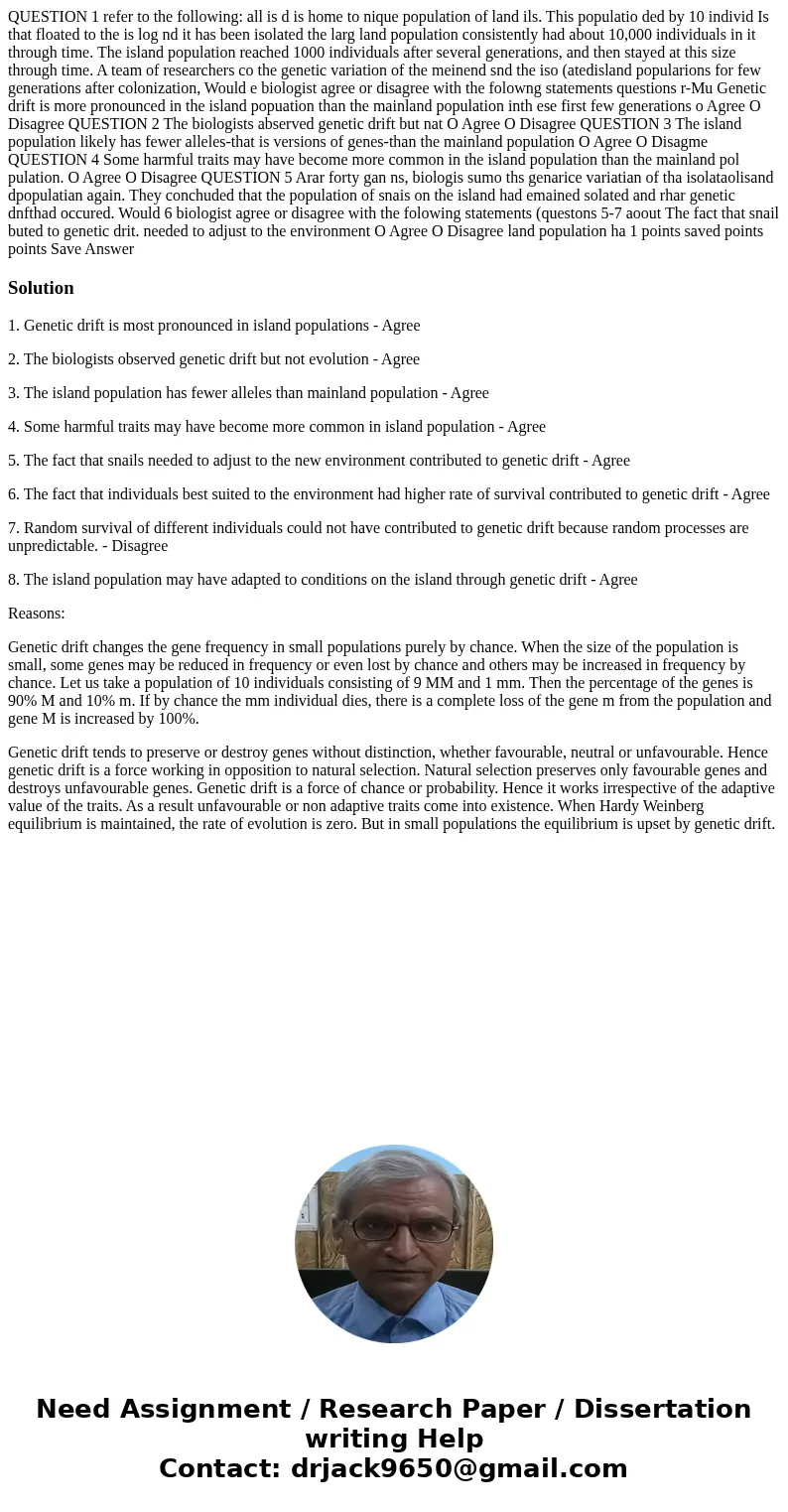QUESTION 1 refer to the following all is d is home to nique
Solution
1. Genetic drift is most pronounced in island populations - Agree
2. The biologists observed genetic drift but not evolution - Agree
3. The island population has fewer alleles than mainland population - Agree
4. Some harmful traits may have become more common in island population - Agree
5. The fact that snails needed to adjust to the new environment contributed to genetic drift - Agree
6. The fact that individuals best suited to the environment had higher rate of survival contributed to genetic drift - Agree
7. Random survival of different individuals could not have contributed to genetic drift because random processes are unpredictable. - Disagree
8. The island population may have adapted to conditions on the island through genetic drift - Agree
Reasons:
Genetic drift changes the gene frequency in small populations purely by chance. When the size of the population is small, some genes may be reduced in frequency or even lost by chance and others may be increased in frequency by chance. Let us take a population of 10 individuals consisting of 9 MM and 1 mm. Then the percentage of the genes is 90% M and 10% m. If by chance the mm individual dies, there is a complete loss of the gene m from the population and gene M is increased by 100%.
Genetic drift tends to preserve or destroy genes without distinction, whether favourable, neutral or unfavourable. Hence genetic drift is a force working in opposition to natural selection. Natural selection preserves only favourable genes and destroys unfavourable genes. Genetic drift is a force of chance or probability. Hence it works irrespective of the adaptive value of the traits. As a result unfavourable or non adaptive traits come into existence. When Hardy Weinberg equilibrium is maintained, the rate of evolution is zero. But in small populations the equilibrium is upset by genetic drift.

 Homework Sourse
Homework Sourse